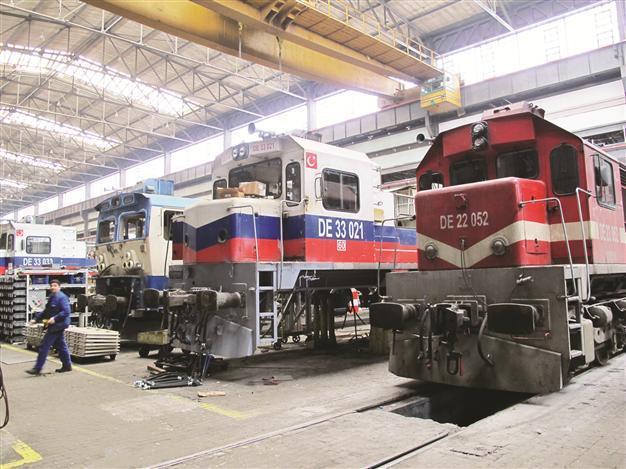ESKİŞEHİR: University town, iron road workshop
Wilco Van Herpen

In Turkish locomotive and wagon company Tülomsaş people connect pieces of train parts to each other.
Finally I have seen it, the world-famous (in Turkey) Devrim car. I am not a big car guy, I am more into campers, motors, and 4X4s. My dream is to make a 4X4 program in Turkey because this country would be extremely suitable for it.In Turkey there are two car brands: Devrim and Anadol. The Devrim car was, from the beginning to the end, created by Turkish engineers. This is in contrast to the Anadol, which was a joint venture project between Ford and Koç Holding. It took the Devrim engineers 130 days to create a car that would show off the grandeur of Turkey. Unfortunately, the production of the Devrim car never took place. Turkey was in one of the most turbulent periods of its existence and politics, so the car never was produced. There were a number of concept cars, and actually one Devrim car had a test ride, but that was all that happened. Now just one or two cars remain, and one is being exhibited in Eskişehir. A couple of years ago a beautiful film was made about the whole tragic story of this car, (available in English, French and German subtitles), and I strongly recommend you watch the film: it’s a beauty.
Eskişehir is mostly known as a university town, but there is so much else to do. There are a number of nice bars and restaurants and - although there is no sea - there is, like Paris, also a beautiful beach during summer. The beach opens in June, unfortunately too late for me to enjoy, because when I was there it was snowing and temperatures dropped to minus 7 degrees. However, especially during spring and autumn the climate is very nice, and you can easily spend a couple of days in Eskişehir. It is the centerT of its province, and has a couple of very nice hotels that can be used as a base for trips in the area. At the moment there is no fast train connection with Istanbul, but a fast train (“hızlı tren”) goes to Ankara and İzmir. Within one or two years the fast train project to Istanbul will be finished, which will make the trip to Eskişehir a real holiday trip. At the moment it takes about 5 hours by car to reach Eskişehir, but the roads are fine and - especially if you plan some trips outside the city - I highly recommend going by car.
It was early in the morning when I went to Tulomsaş (a Turkish locomotive and wagon company). The company was founded in 1894, and since then it has been situated in the same place. The reason I went there was to visit a photographer friend of mine, Gülbin. She is a student at the university and wanted to show me some of Eskişehir, specifically Tulomsaş.
A huge place of 20 football fields
The place was overwhelming, it was huge (it must have been the size of 20 football fields together and this was just one hall) and wherever I looked there was another picture to see, or another activity going on. There were big locomotives, sometimes stripped of their motors, wheels, windows; wagons, completely empty or sometimes nothing more than just the under part of the train wagon; a row of big metal train wheels ready to be replaced or freshly painted; huge cranes picking up big pieces of metal and moving them to other parts of the hall; people welding or smoothing big pieces of iron to be connected to train parts. There were sparks everywhere, the sound was unbearable, but once I moved away the sound just got lost in the immensity of the big hall.
Slowly, I found myself again and started taking pictures. The place was really marvelous, I wished I could stay there for a week or a month. There was so much to see, so many pictures to take. It was like visiting the Topkapı Palace with a time limit of only an hour. I know that comparing Topkapı with this factory may seem a bit strange, but I assume you have seen Topkapı and so you know how big and overwhelming it is. Both places deserve more - more time and more connection with the people who work there.
When I think about the locomotive factory I imagine workers with oil on their cloths and faces, big machines and trains or locomotives and all of this was true, except for the first. All the workers were so clean, as if they had prepared themselves for a fashion show. All of them spoke about their work with love and respect in their voices. I could not “catch” one person looking bored unhappy. It was obvious that these people loved their job.
I continued taking my pictures and chatting with Gülbin. This was not the picture I had in my mind when Gülbin invited me to come over to Eskişehir, but I was happy she had shown me this place: the iron road workshop of Turkey.
















